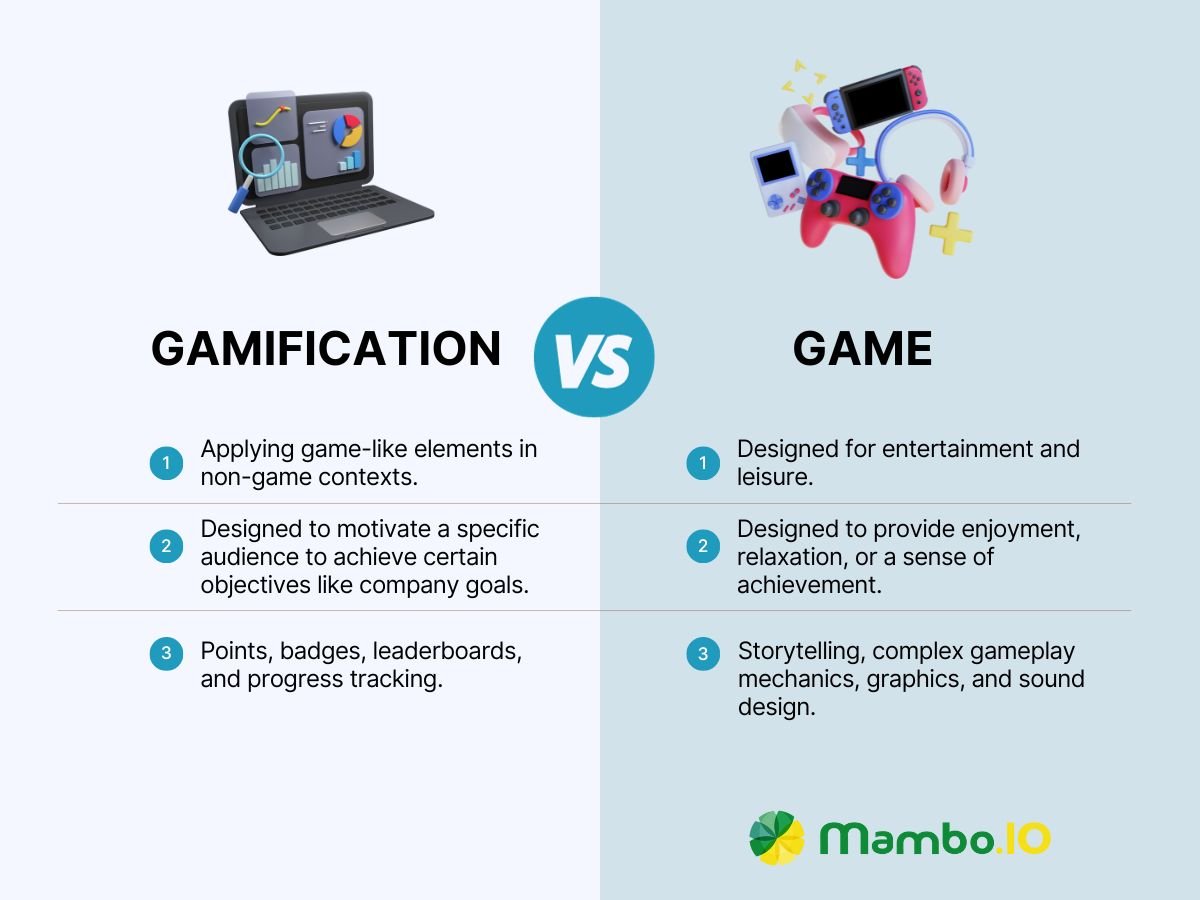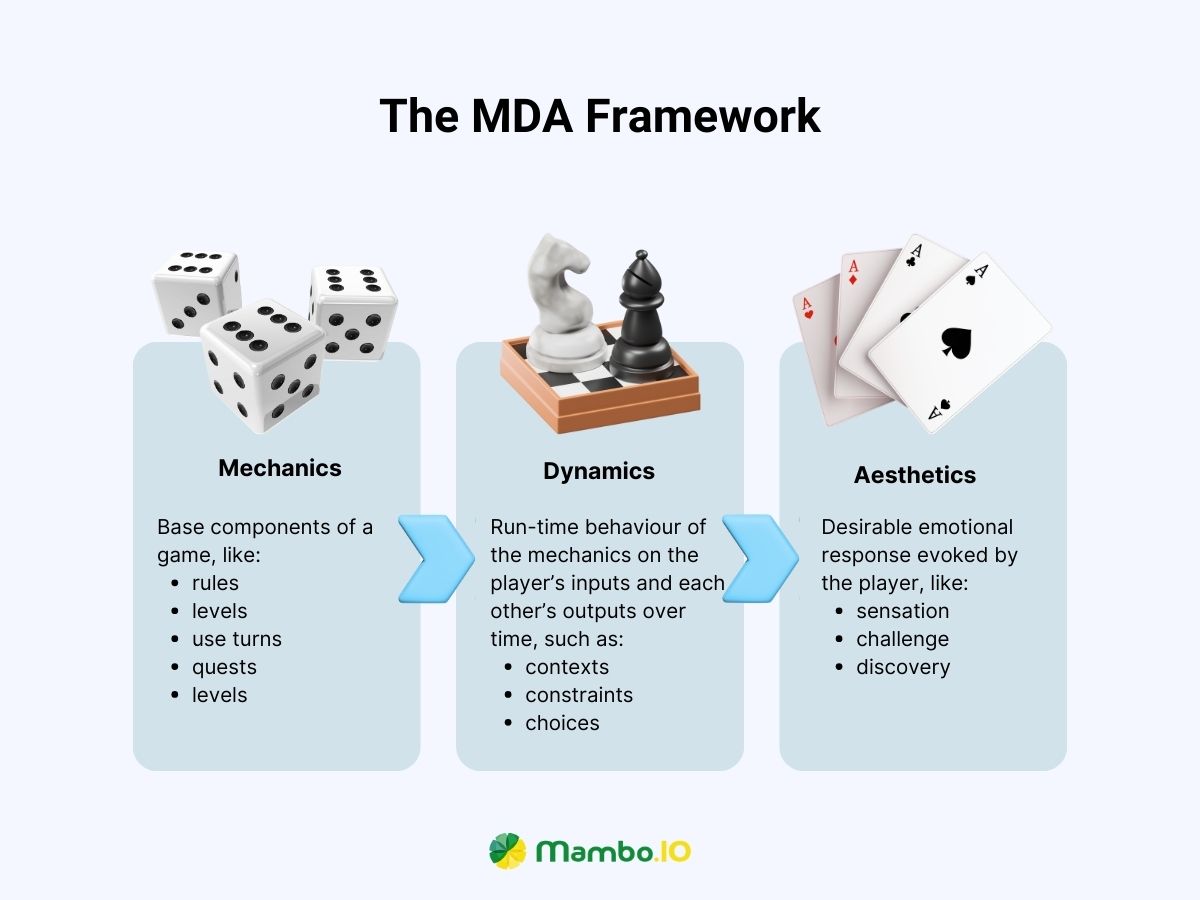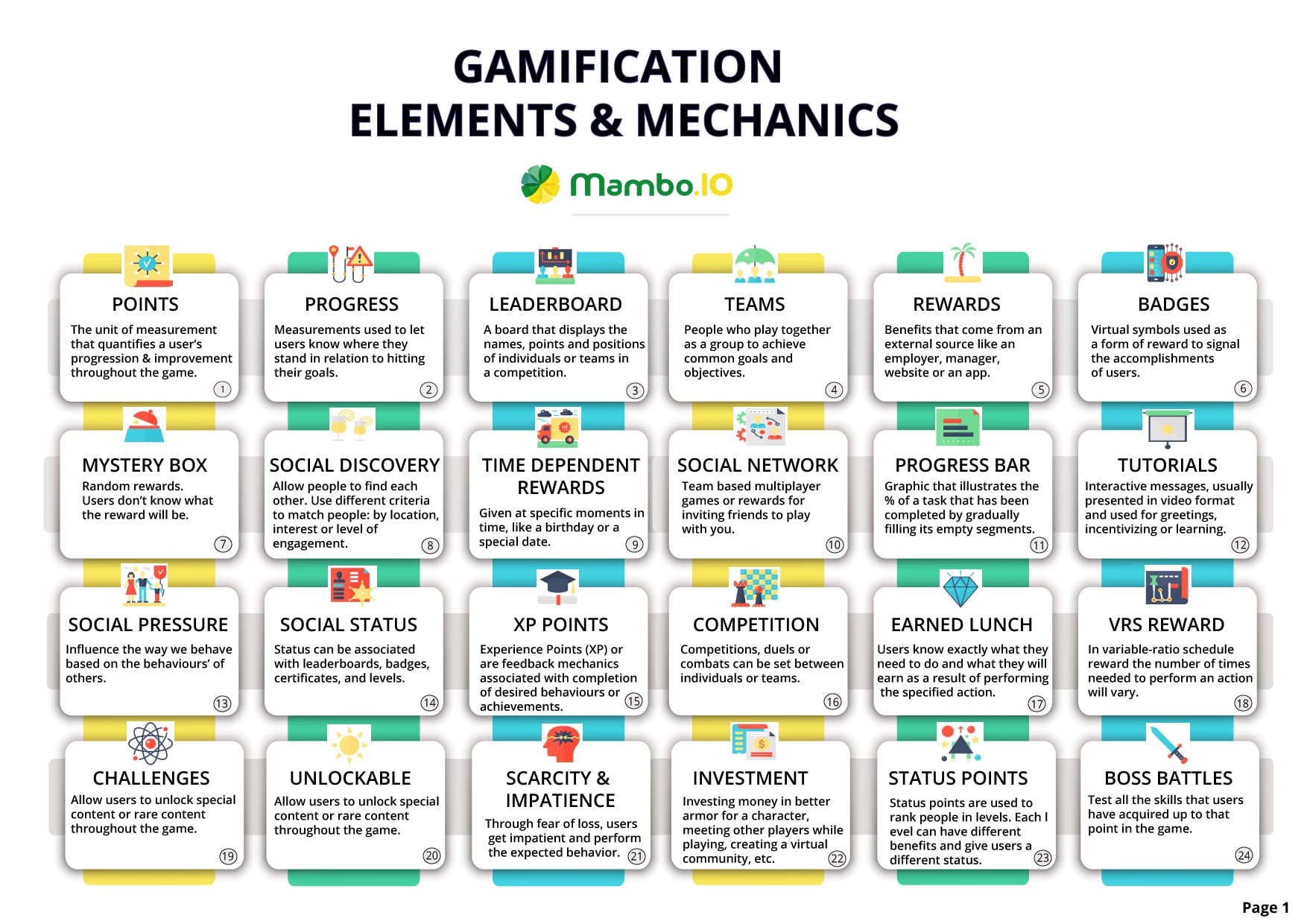How Gamified Websites Are Engaging Their Audience
Forget fancy bells and whistles – gamification is about tapping into that deep-down desire to win and using it to make your product amazing! Think progress bars, rewards, and even a touch of healthy competition. Done right, gamification makes routine interactions feel exciting, boosting engagement and fostering loyalty.
Want to see it in action? Explore successful gamified websites and learn how the best examples drive user behaviour. Discover how to use those same techniques to elevate your own product experience.
Table of Contents
- Understanding gamification
- Benefits of website gamification
- Key elements of gamification
- Potential pitfalls and challenges
- Gamification in action: success stories
- Measuring the impact of gamification on user engagement
- Gamification takeaways: levelling up your website
- Machine Learning In Finance: 12 Essential Applications
- How To Create Interactive Compliance Training For Bank Employees
- How Fintech Apps Are Using Gamification To Increase User Engagement
- Top Gamification Companies for Employee & Customer Engagement
Download your free
“Gamification Guide”
Get your PDF now and start transforming your approach to digital engagement!
Understanding gamification
Gamified websites understand what makes us tick. They use a clever mix of strategies that play to our love of progress, rewards, and a little friendly competition.
The concept of gamification
Sometimes life feels like a never-ending chore list. Gamification is like turning those chores into a treasure hunt – suddenly, you’re not just doing stuff, you’re on a quest for rewards and achievements. That’s the power of gamification.
It’s fascinating how game elements tap into something so basic in our psychology. We crave progress, a sense of achievement, and (let’s admit it) showing off a little sometimes. Gamification satisfies all that. My favourite example is ClassCraft. It transforms the classroom into an epic role-playing adventure, making learning feel way more exciting.
Of course, it’s not just about flashy badges. Done thoughtfully, gamification can drive serious results. Imagine onboarding new employees with a gamified platform that makes learning company policies surprisingly enjoyable. That translates to happier, more productive team members.

Benefits of website gamification
The transformative power of gamification on websites extends far beyond mere entertainment. Here’s how gamification is revolutionising the digital experience and driving tangible benefits for businesses and users alike:
#1. Enhanced user engagement and retention
Points, badges, and leaderboards aren’t just fancy decorations. They give users a sense of accomplishment, a reason to keep exploring, and maybe even a bit of healthy competition. That makes the whole experience way more fun and keeps them coming back for more.
When a website is genuinely enjoyable, people naturally want to spend more time there. That means lower bounce rates and deeper engagement – and for a business, that can translate directly into success.
#2. Improved customer loyalty and feedback
Rewarding users for their feedback through gamified elements makes the process more engaging. On top of that, it also increases user trust and satisfaction, leading to higher customer loyalty.
Examples like Habitica and LinkedIn show how gamification can motivate users to complete tasks or enhance their profiles, tapping into the users’ desire for achievement and recognition.
#3. Boost in business metrics
Gamification can lead to a 100-150% increase in engagement metrics. This covers unique views, page views, and community activities. In effect, it boosts browsing time by up to 30%.
Real-world successes include KFC’s Shrimp Attack game and M&M’s Eye Spy pretzel game. These examples highlight the significant impact of gamification on sales growth and brand awareness.
Key elements of gamification
Diving into the core of gamified websites. Let’s unravel the elements that make them tick and how they engage users in a unique, interactive experience:
Game mechanics vs. game dynamics
At the foundation, game mechanics such as points, levels, missions, leaderboards, badges, and progress bars set the stage for interaction.
However, it’s the game dynamics—emotions, behaviours, and desires—that truly resonate with users, making the experience memorable and engaging.

Points and scoring systems
Think of points and scores like those frequent flyer miles you collect. Every action earns you a little bit more, and suddenly that goal of a free trip feels within reach. That anticipation keeps you engaged and eager to do more.
- Progress made visible: Points give users a tangible sense of accomplishment. That feeling of “levelling up” is oddly satisfying!
- Motivation booster: Scores drive that healthy competitive spirit. Even if it’s just against yourself, seeing that number climb is a powerful motivator.
- The path to rewards: Points aren’t just for bragging rights – they’re often tied to unlocking cool rewards or new features.
The best scoring systems are clear, attainable, and directly related to actions that benefit both the user and your goals.
Think of gamification as one of those arcade games where you’d chase the high score. The same principle applies here. A well-designed scoring system makes users want to come back and do better.
Badges and achievements
Imagine badges as those shiny trophies you might have won as a kid, but with superpowers. In gamified websites, they’re not just boosting your street cred – they’re proof of your progress, skills, and dedication. Here’s why:
- The thrill of the unlock: Getting a badge feels awesome! It’s that instant recognition that says, “Hey, you did this!”
- Mapping your journey: Badges often mark key milestones, making it way more fun to level up or learn new things.
- Motivation fuel: Want to keep going? Seeing your growing badge collection is a powerful incentive to explore more and try new challenges.
- Wear your wins proudly: Most systems let you show off your badges. This adds a fun, competitive element and can inspire others.
Keep in mind that the best badges feel attainable but still challenging. It’s about rewarding effort and encouraging growth. In team settings, badges can even indicate who’s got specific expertise. This fosters collaboration and helps everyone learn from each other. Essentially, badges turn accomplishments into a fun, shareable collection, making the whole gamified experience more motivating and rewarding.
Leaderboards and competitions
Picture a leaderboard as the ultimate scoreboard for your website. It taps into our natural competitive spirit, making the whole experience a lot more exciting. Here’s why they’re so effective:
- The drive to win: Let’s be honest, seeing your name climb that leaderboard is a rush! You want to do better, try harder, and outshine others (in a friendly way, of course).
- Cool points: Leaderboards are basically a chance to show off your achievements – and who doesn’t love a bit of recognition?
- Igniting collaboration: While leaderboards spark competition, they also inspire teamwork. Users might even band together to strategise and climb those ranks.
- Real-world success: Think of companies that use leaderboards to track sales goals. Those top performers aren’t just winning on screen – they’re driving serious business results.
Leaderboards need to be fair and transparent. When users trust the system, that’s when they’re most motivated. A well-designed leaderboard turns your website into a thrilling competition. That translates to more engaged users, a stronger sense of community, and potentially even better business outcomes.
Levels and progression systems
Think of levels as stepping stones on an exciting journey through your website. A well-crafted system makes users feel like they’re constantly growing, learning, and unlocking new possibilities. Here’s why:
- Challenge = motivation: As users level up, tasks should get a little tougher. This keeps things interesting and fuels their drive to succeed.
- Sweet satisfaction: That feeling of levelling up is pure motivation! It’s instant validation for the user’s effort.
- Visualise the journey: Progress bars are your best friend! They give a tangible sense of accomplishment.
- Choose your own adventure: Consider a mix of horizontal (gaining new skills) and vertical (mastering a specific area) progression. This keeps things dynamic!
- Levelling up in real life: Companies use gamification to create clear paths for employee development. Imagine levelling up your skills and unlocking new job opportunities – that’s powerful!
Rewards should match the difficulty of the level. Bigger challenges deserve bigger rewards to keep users hooked. A great progression system is like a treasure map. It should guide users and reward their progress. It should also make them eager to see what’s next, boosting engagement and fostering a sense of continuous growth.
Challenges and quests
Get rid of those long and boring to-do lists. Challenges and quests are way more fun. Think about it: wouldn’t you rather be on a mission to achieve something awesome than just ticking off boring tasks? Here’s why it gets addictive:
- Level up, hero: Missions give you that feeling of “Okay, I got this!” They take your big goals and break them into steps you can actually tackle. Add in a challenge, and suddenly you’re testing yourself, which is way more satisfying.
- Sweet rewards: Who doesn’t love getting goodies for a job well done? Unlocking a cool badge, a special feature, or whatever fits your site – that’s the stuff that keeps you coming back for more.
- The power of story: Weave in a bit of narrative, and suddenly those quests become an epic journey. This makes the whole experience way more immersive!
- Share your triumphs: Challenges are perfect for friendly competition and social bragging rights. That translates into more buzz and engagement for your website.
Challenges and quests add an element of adventure and reward. They turn routine interactions into something users actively look forward to, boosting engagement and making your site irresistible.
Feedback and recognition
Feeling appreciated is awesome. Think about that moment when someone notices how hard you’ve been working. It’s way more than just “good job” – it’s proof your effort matters. Here’s why a good feedback system is so important:
- That “Yesss!” feeling: Remember when you finish a tough task or ace a project? That little burst of pride you get – a good feedback system taps into that. It makes you want to keep pushing.
- Guidance, not just praise: Interestingly, constructive feedback is just as important. It’s like a roadmap, showing users how to improve and keeping them invested in their own growth.
- Building a community: Feedback loops become even more powerful when they’re shared within a community. Imagine being recognised by your peers—that fuels motivation and fosters a sense of belonging.
A great feedback system makes you feel seen, understood, and motivated to keep going. That’s how you turn a gamified experience into something people genuinely want to be a part of.

Customisation and personalisation
Think of customisation like building your own perfect sundae. Gamification is the ice cream, and with customisation, you pick the toppings, sprinkles, and drizzle that make it irresistible. Here’s why this works:
- They get you: Great customisation starts with understanding your goals and what motivates you. Smart websites use surveys or analyse your behaviour to figure this out.
- The power of prediction: Websites can even use data and AI to predict what you’ll like. Imagine challenges popping up at your peak energy times – that’s next-level personalisation!
- Designed for your style: Whether you’re competitive, collaborative, or just like to explore, customisation tailors the experience. It’s the difference between a generic game and one that feels like it was made for you.
- Rewards that matter: Getting a reward that fits your interests feels way better than random points. That extra effort makes the whole experience more motivating.
- Going deeper: The best customization looks beyond just one thing about you. It considers your personality, goals, and even the time of day.
Customisation turns gamification from something generic into an experience that feels truly personal. That’s what makes it fun, engaging, and keeps you coming back for more.
Download your free
“108 Gamification Elements and Mechanics”
Get your cheat sheet and have a quick reference at your fingertips!
Potential pitfalls and challenges
Navigating the gamified landscape can sometimes feel like trying to solve a Rubik’s Cube blindfolded. Here are a few pitfalls to watch out for, ensuring your gamified website doesn’t turn into a digital labyrinth:
Simplicity is key
- Over-complication: Avoid turning your website into a complex board game. Users shouldn’t need a manual to navigate your site. Keep game mechanics straightforward to prevent user frustration.
- Instructions: Nobody likes feeling lost. If players can’t figure out the basics quickly, they’ll likely move on to something else. Keep those rules simple and super easy to find.
- Design: First impressions matter. Your game should look polished and inviting. Confusing layouts or clashing colours can be a major turnoff. Make sure it’s fun to look at and easy to navigate.
Balance and fairness
- Rewards vs. effort: Ensure the juice is worth the squeeze. Rewards should match the effort and be desirable to keep users coming back for more.
Competition vs. collaboration: While a little friendly competition can spice things up, too much can lead to alienation. Provide options for users to engage in both competitive and collaborative activities.
Long-term engagement
- Avoiding burnout: Just like in any marathon, pacing is crucial. Implement protocols to prevent user burnout, such as limiting daily attempts or incorporating cooldown periods.
- Evolving content: Keep the game fresh. Regular updates and new challenges can prevent your gamified system from becoming as outdated as a flip phone.
Gamification in action: success stories
Ready to see how gamification transforms everyday experiences? Check out these examples:
Learning made addictive
Websites like Khan Academy and Skillshare masterfully use points, badges, and progress tracking to make learning addictive. Their approach transforms education into an engaging, self-paced journey.
Your to-do list – but epic
Forget boring to-do lists. Websites like Todoist tap into that desire for achievement and progress. You earn points by completing tasks, level up as you gain experience, and can even visualise your productivity with colorful charts. Suddenly, even mundane tasks feel a bit more satisfying.
Networking gets a boost
LinkedIn subtly nudges you to build a complete profile with that little progress bar. It’s clever, as a complete profile gets you more attention.
The power of upvotes
Reddit is a masterclass in gamifying community contributions. Good posts get upvoted, which fuels a sense of accomplishment and drives user participation. Sites like X (formerly Twitter) use a similar system.
Productivity meets sustainability
The Forest app is brilliantly simple. Stay focused on a task, and you grow a virtual tree. But get distracted, and it dies! They plant real trees too, combining gamification with a sense of purpose.
These examples show how gamification isn’t just for entertainment. From boosting productivity to social good, it has the power to transform experiences across all kinds of industries.
Measuring the impact of gamification on user engagement
Don’t just assume your gamification works – prove it! Here’s how to measure its impact:
- Get specific: What do you REALLY want to achieve? More logins? Deeper engagement? Define clear goals first, then pick metrics that directly measure them.
- Numbers + feelings: Track task completion, time spent, etc. But don’t forget surveys and interviews! That’s how you find out what users actually think and feel about the experience.
- Compare and contrast: Whenever possible, test your gamified system against a control group (no gamification). This shows you how much of a difference it truly makes.
- Think like a scientist: Gamification is about human behaviour. Consider age, personality types, etc. when analyzing data – there are always interesting patterns!
- Don’t just report, ACT: Share those findings and use them to improve your system. Gamification should never be static – it’s all about iteration.
Ultimately, bear in mind that measurement isn’t about getting a perfect grade. It’s about understanding what works, what doesn’t, and how to make your gamification even more effective.
Gamification takeaways: levelling up your website
The best gamified websites strive to do more than just add a bit of fun. They aim to create and deliver genuinely valuable experiences that keep users coming back. Here are key reminders to keep in mind:
- Make it meaningful: Tie your gamification directly to your website’s core purpose. This ensures that the entire experience isn’t merely a pointless distraction. Instead, it serves as a seamless and natural extension of what you offer.
- Gamification has no limits: Be creative in using gamification to improve your user experience, regardless of your industry. With platforms like Mambo.io, there’s an astonishing level of flexibility you could work with in creating a gamified website.
- Rewards are tricky: They’re powerful, but it’s very easy to overdo it. Make sure rewards feel special and encourage positive behaviours. If they’re too easy to get, they lose their impact.
Done well, a gamified website can become a place where users feel motivated, challenged, and connected. Now, that’s a win for everyone.
Latest Posts
Machine Learning In Finance: 12 Essential Applications
The impact of machine learning on finance is significant. Thanks to this technology, financial institutions are now equipped to make efficient decisions. Through the analysis of data sets, machine learning […]
How To Create Interactive Compliance Training For Bank Employees
Banking compliance training isn’t just another task. It’s the stage where everything else performs. Banks must navigate a myriad of regulations and laws. After all, this is a trust-driven, high-stakes […]
How Fintech Apps Are Using Gamification To Increase User Engagement
Discover how gamification in fintech is revolutionizing financial engagement, making banking fun & boosting user loyalty.






